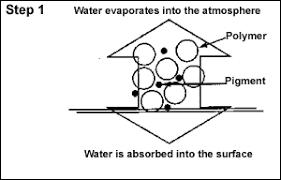
Artists, whether seasoned professionals or budding enthusiasts, are constantly in search of the perfect medium to bring their creative visions tempera paint vs acrylic to life. Among the plethora of options available, tempera paint and acrylic stand out as popular choices, each offering unique characteristics and advantages. In this article, we delve into the realm of artistic expression, comparing and contrasting tempera paint with acrylic to help artists make informed decisions based on their specific needs and preferences.
Understanding Tempera Paint
Tempera paint, historically known as egg tempera due to its traditional binding agent, has been a staple medium in art for centuries. Its origins trace back to ancient Egypt and Greece, with notable masterpieces such as those by Renaissance artists like Botticelli and Giotto showcasing its timeless appeal.
Tempera paint typically consists of pigment mixed with a water-soluble binder, most commonly egg yolk. This composition results in a smooth, matte finish that dries quickly, making it ideal for detailed work and intricate brush strokes. Artists appreciate tempera for its opacity, allowing for layering and precise color control.
One of the distinguishing characteristics of tempera paint is its delicate nature when dry. While it provides vibrant colors and excellent adhesion to surfaces like wood, plaster, and canvas, it lacks the flexibility and durability of other mediums like acrylic. Consequently, artworks created with tempera may require special care to prevent cracking or flaking over time.
Exploring the Versatility of Acrylic
In contrast to tempera, acrylic paint emerged in the mid-20th century as a modern alternative with remarkable versatility and durability. Comprising pigments suspended in an acrylic polymer emulsion, acrylic paint offers artists a wide range of possibilities, from thick impasto techniques to delicate washes reminiscent of watercolors.
Acrylic paint boasts several advantages over tempera, including its fast drying time and water-resistant properties once dry. This rapid drying allows artists to work more spontaneously, layering colors and experimenting with textures without extended waiting periods. Additionally, acrylic paints are known for their flexibility and resilience, making them suitable for various surfaces, including canvas, paper, fabric, and even wood.
Another notable characteristic of acrylic paint is its ability to achieve a wide spectrum of effects, depending on application techniques and additives. Artists can dilute acrylics with water for translucent washes or mix them with mediums to extend drying time, increase glossiness, or create unique textures. Furthermore, acrylic paints are available in an extensive array of colors, including metallics and fluorescent hues, providing endless possibilities for artistic expression.
Comparing Characteristics and Applications
When considering tempera paint vs. acrylic, artists must weigh the distinct characteristics and applications of each medium to determine which best suits their creative goals and preferences.
- Opacity and Color Intensity: Tempera paint offers rich, opaque colors that are ideal for detailed work and precise layering. In contrast, acrylic paint provides vibrant hues with varying levels of transparency, allowing for greater depth and complexity in compositions.
- Drying Time and Workability: Tempera paint dries quickly, necessitating efficient brushwork and meticulous planning. Acrylic paint offers artists more flexibility with extended working time, enabling experimentation and revision throughout the creative process.
- Surface Compatibility and Durability: While both mediums adhere well to surfaces like canvas and wood, acrylic paint offers superior durability and resilience, making it less prone to cracking or flaking over time.
- Texture and Finish: Tempera paint yields a smooth, matte finish that accentuates fine details and brushwork. Acrylic paint allows for a broader range of textures, from glossy to matte, depending on additives and application techniques.
Conclusion
In the realm of artistic mediums, tempera paint and acrylic each offer distinct characteristics and advantages that cater to different artistic styles and preferences. While tempera paint boasts a rich history and timeless appeal, acrylic paint represents a modern, versatile option with unparalleled flexibility and durability.
Ultimately, the choice between tempera paint and acrylic depends on factors such as desired effects, working preferences, and project requirements. Whether seeking the luminous depth of tempera or the dynamic versatility of acrylic, artists can explore these mediums to unlock new dimensions of creative expression and bring their visions to life on canvas, paper, or any surface their imagination desires.





